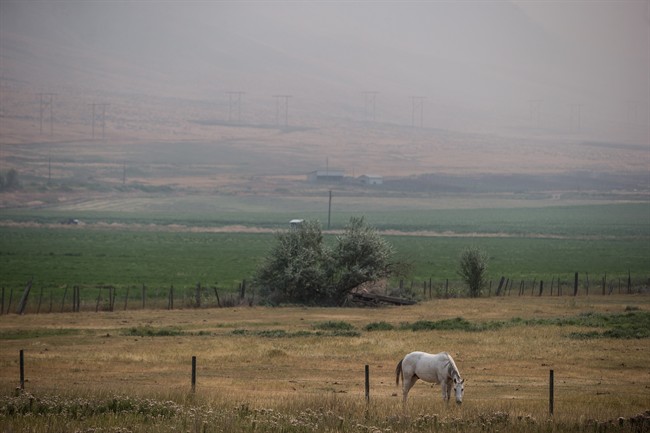Wildfire officials sometimes use fire to fight fire, but some people in the B.C. interior are up in arms about the practice.

BC Wildfire Service uses a technique known as planned ignitions, controlled burn-outs, or backfiring to fight the wildfires.
Fire crews attempted a back burn of the Elephant Hill wildfire on Tuesday, hoping to stop the flames from spreading. But the wind changed course and the operation got out of hand, with the fire jumping across Highway 97.
This incident caused some people on social media to claim that this practice is unsafe.
“It is with the saddest of heart that I have to tell you that our mountains are on fire all around us. This is due to a tragic back burn that went horribly wrong. This wasn’t because of an unforeseen turn of events but for valid reasons that this back burn was completely unsafe,” Maiden Creek resident, Teri-Lyn Dougherty, claimed in a Facebook post that has been shared more than a thousand times.
During the daily wildfire update conference call on Wednesday, chief fire information officer Kevin Skrepnek said controlled burns are an essential and effective tool for fighting wildfires and that while accidents do happen, the vast majority of planned burns are successful.
“We’ve been doing this on many fires across the province up until this point,” said Skrepnek.

Get breaking National news
In a release, B.C. Wildfire Service says that when the decision is made to conduct burning operations, the fire is usually beyond initial attack stage.
Officials say, “Whether the B.C. Wildfire Service is “burning out,” “burning off” or “backfiring,” the goal is always the same: To remove majority of available fuels so that the fire has nothing left to burn.”
READ B.C. wildfire status Thursday: Poor air quality remains as heat records broken
Here are the things you need to know about controlled burns:
- Burning off and burning out are carried out on wildfires to enhance the overall safety, efficiency, and effectiveness of fire management efforts. Planned ignitions are considered when attacking the fire directly, such as with water and removing fuels with equipment or by hand, would no longer be effective or safe.
- The first priority is always safety. Controlled burns must provide for the safety of personnel, the public, equipment and all adjacent values. Potential hazards must be identified, assessed, and mitigated with the ignition plan.
- Before planned ignitions can be carried out environmental conditions must be considered like: weather, terrain, fuel loading, and potential fire behaviour. Wind and its direction is often the most influential environmental factor when conducting burn operations on wildfires. Temperature and humidity must also be in a zone where ignition is successful and all fuel is consumed at a manageable rate.
- Burn operations are planned when wind direction will be the most beneficial to achieve the burn’s objectives. During the summer 2017, there is not seeing any significant decrease in fire behaviour overnight on many of the major fires.
- During a wildfire, ignition objectives are set by the Incident Management Team or the Ignition Specialist. In both cases, ignition falls under the Operations Section Chief. Before any burn is carried out on a wildfire, safety hazards are addressed and crews must establish control lines and a water delivery system.
According to B.C. Wildfire Service, controlled burns are not necessarily counter-productive as there are many factors at play.
“Burn-off operations are always supported with appropriate resources, such as aircraft, heavy equipment and firefighters. In this way, if a burn does escape it can be acted on right away. Given the aggressive behaviour being exhibited on many of the 2017 wildfires, there is the potential for escapes; but that potential exists without conducting burn-offs as well,” said officials from B.C. Wildfire Service.
The wildfire continues to burn and has grown to approximately 84,442 hectares.
READ B.C. wildfires map 2017: Current location of wildfires around the province
Additional information:
- Burning out – reduces the fire spread potential by eliminating unburned forest fuels between a control line and the fire perimeter. Burning out can bring the fire’s edge to natural boundaries like a lake or rock outcropping or to constructed boundaries like machine or hand guard.
- Burning off – entails burning green islands of fuel that are within the fire perimeter. This is done to eliminate the chance of re-burn and fire spotting potential.
- Backfiring – the same as burning off but on a much larger scale, the aim being to deprive the fire front of as much fuel as possible in as short a time as possible. Backfiring is used to reduce fire intensity, spotting and forward rate of spread. It can also improve visibility for air attack by drawing smoke away from drop zones where tankers will apply retardant.







Comments